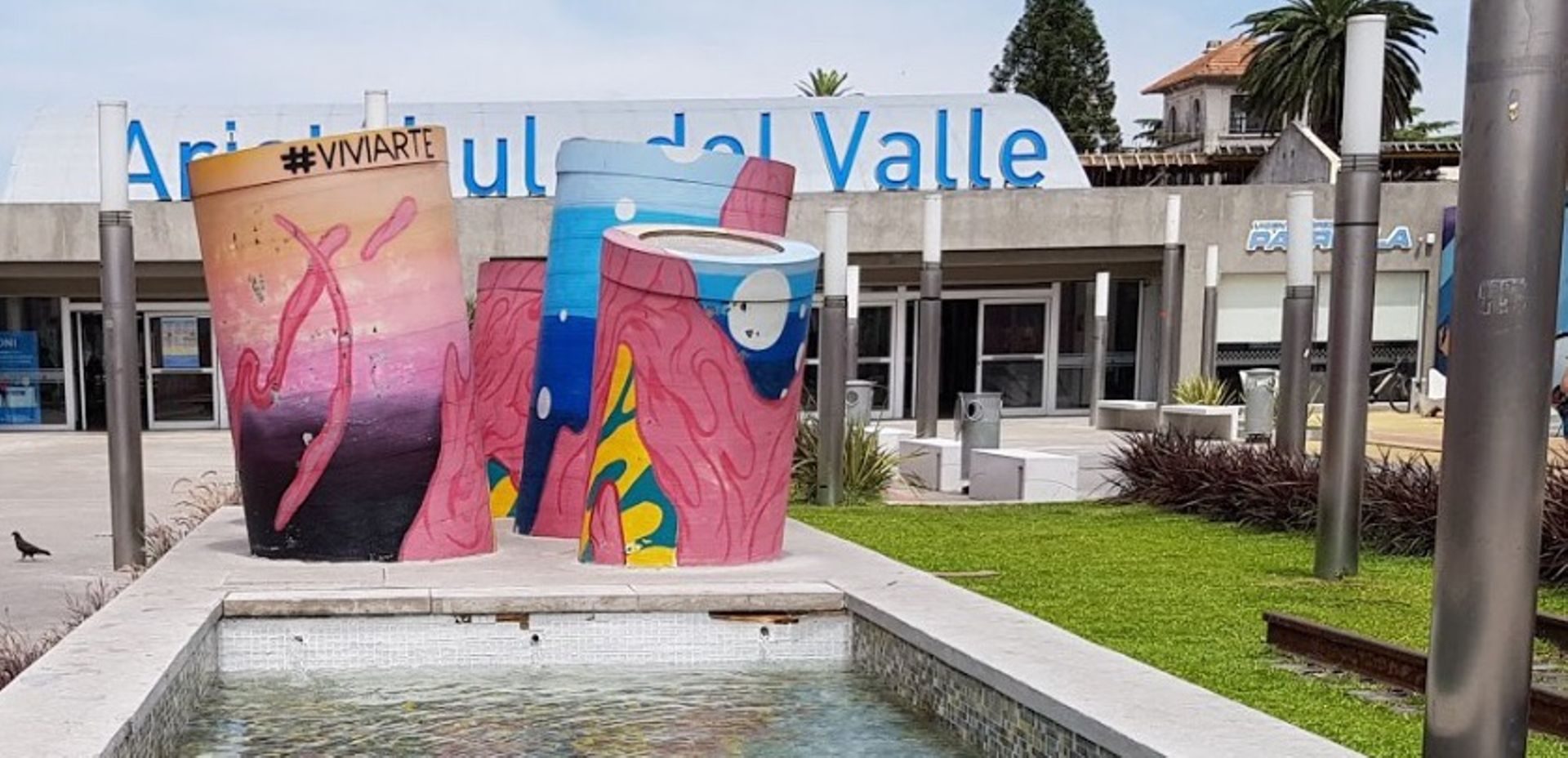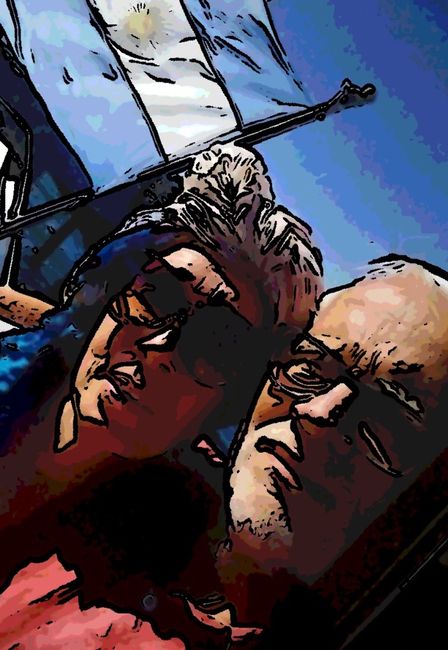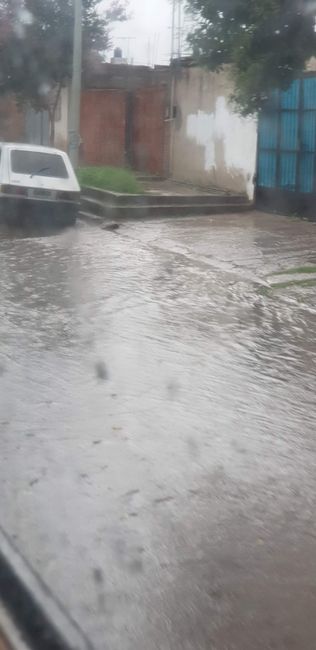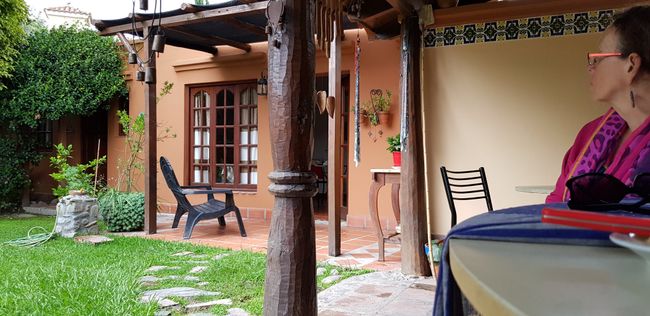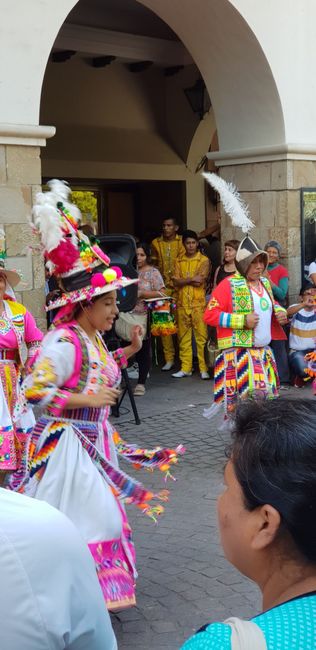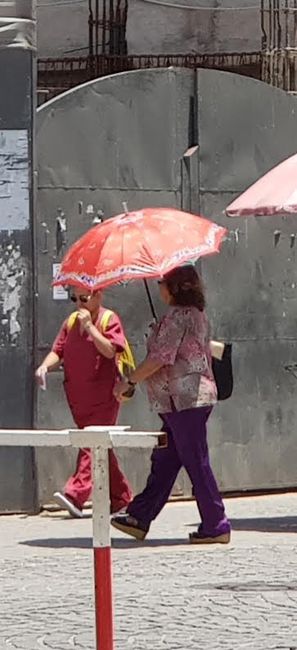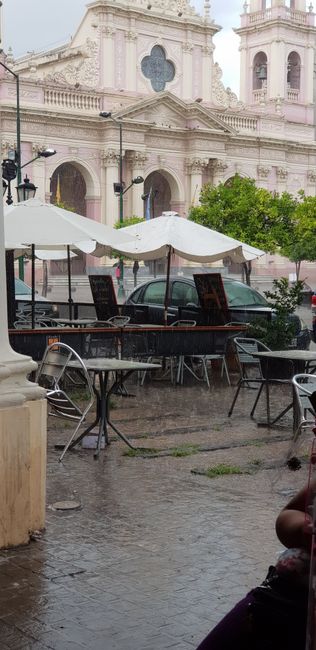Let's go to Salta
Басылган: 26.01.2019
Capital of the province of the same name. We arrived at our Airbnb accommodation, located south of the city near the airport, in very changeable weather. The road in front of the house could hardly be called a road. The continuous rain had turned the heavy clay soil into a slippery swamp with huge puddles. Luckily, we were able to drive the car into the driveway and safely get out on the paved sidewalk. The accommodation was pretty much the best we've had on our travels so far. (https://www.airbnb.com/rooms/22219391, also known as 'Hostal Alma y Bienestar' on Google Maps). The hostess was super nice and practically fulfilled every wish we had. The room was very cozy and tastefully decorated, with its own entrance via the terrace, private bathroom, and a small kitchen for our exclusive use. Needless to say, everything was spotlessly clean. Beautiful garden with a huge quince tree. Despite the persistent rain, we were able to relax on the covered terrace in the evening. However, it got so cold at night that we had to put an extra blanket on the bed to stay cozy. Argentine summer is supposed to be different!
The next morning, to our surprise, the sun was shining. We took the bus directly to the city center. Like in many larger Argentine cities, there is a central square with several representative buildings, restaurants, and shops, often followed by a pedestrian zone, as well.
After watching the hustle and bustle in and around the square from a café for a while, we decided to visit the Museo Arqueológico de Alta Montaña (http://www.maam.gob.ar/#). This museum is solely dedicated to the discovery of three mummified child bodies, found during excavations on the Llullaillaco volcano in 1999.
Actually quite creepy: around the year 1500, these three young lives were sacrificed to the gods at an altitude of nearly 7000 meters on Mt. Llullaillaco. The children, who came from the noblest Inca families and were prepared for this moment for years, were ceremoniously dressed, made unconscious with alcohol and coca leaves, and then buried alive. According to Inca beliefs, these children continue to live in the realm of the gods and protect their people. More information (unfortunately only in English): https://en.m.wikipedia.org/wiki/Children_of_Llullaillaco
After leaving the museum, we found ourselves back in pouring rain. Unfortunately, we had not brought an alternative-function umbrella with us.
The next morning, it was still raining. We decided on a day trip on RN 51 towards San Antonio de los Cobres. Well, we didn't drive that far due to the weather, as a bright storm was brewing on the horizon. So, we only made it to Santa Rosa de Tastil, about 1.5 hours from Salta.
.Авап
